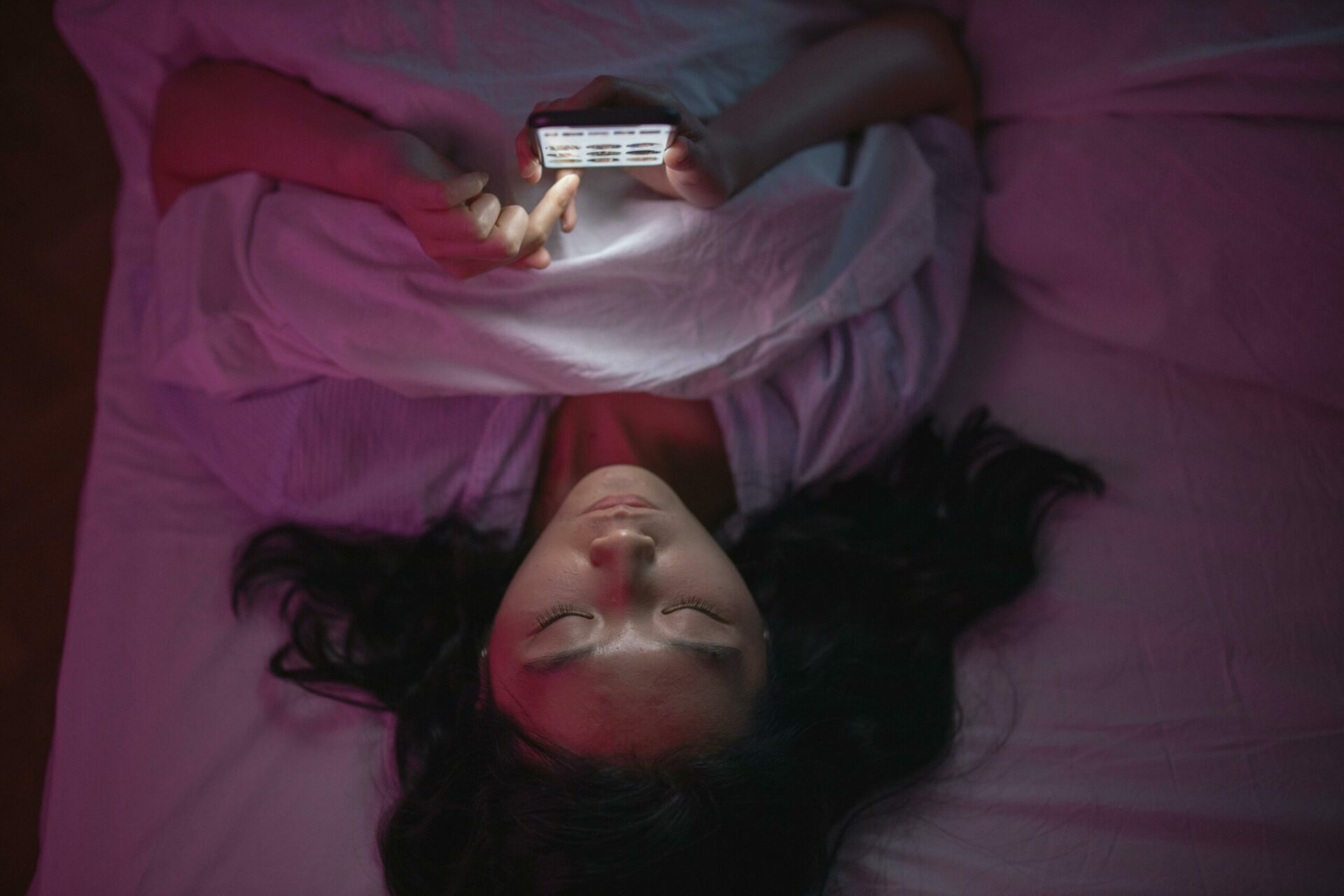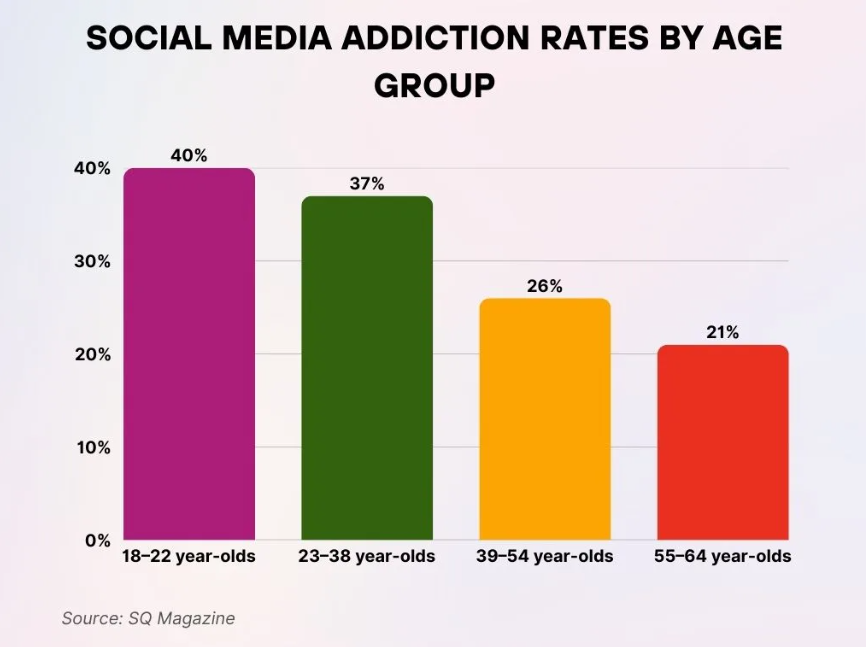
Let me guess, you have been using social media advertising with high hopes, only to watch your brand engagement plummet week after week? Don’t worry, you are not alone. Instagram’s median engagement rate collapsed from 2.94% to 0.61% in just one year, and it’s costing brands billions. Meanwhile, 5.42 billion social media users spend an average of 141 minutes per day scrolling, creating a brutal paradox: more eyeballs than ever, yet a never-before-seen lack of attention, causing ad fatigue.
Why Scroll Behavior is Ruining Your Social Media Advertising
Scroll behavior on social media refers to the act of continuously scrolling through content on various platforms, often without a clear purpose or intention. Scrolling triggers dopamine hits that make stopping feel neurologically impossible. On average, TikTok users spend 58 minutes daily on the platform, yet spend just 1.7 seconds viewing each piece of content before swiping. But the most alarming is that teen users now toggle between apps every 44 seconds, compared to 2.5 minutes a decade ago.
This mindless scrolling doesn’t just distract users; it makes them physiologically incapable of processing your social media advertising before their thumb moves to the next post.

Understanding Ad Fatigue in the Scroll Economy
Ad fatigue occurs when social media users are exposed to the same advertisement causing them to become desensitized or actively ignore it. It results in a decline in engagement and lower click-through rates over time.
74% of users cite intrusive and disruptive ads as their main reason for using ad blockers. As a result, it cost the advertising industry approximately $54 billion in lost revenue globally in 2024. It is a direct consequence of consumers rejecting overwhelming and repetitive advertising.
A Harvard Business School working paper identifies creative fatigue as responsible for “diminishing campaign returns and inefficient media spend”, yet 37% of advertisers admit they cannot manage frequency across platforms.
Hence, ad fatigue doesn’t just reduce the effectiveness of social media advertising; it actively damages the brand engagement you’ve spent years building.

How to boost your Social Media Advertising in 2025
Here are a few strategies you can implement to increase your digital advertising effectiveness and restore your brand engagement.
Segment your audience
Your college student audience doesn’t need the same message as working parents. You need to break your audience into smaller groups based on interests, age, or buying habits. When ads feel personally relevant instead of mass-produced, people actually pay attention, and ad fatigue drops significantly.
Social Media Native Content
“Authenticity is the clear differentiator that makes ads connect with audiences, necessitating continued reliance on UGC. But as AI spreads rapidly throughout every facet of the ad industry, a balanced approach will become increasingly necessary“, an E-marketer study reveals
The most effective social media advertising doesn’t look like advertising because people trust real people, not perfect ads. Create ads that mimic organic content using real people, authentic storytelling, and platform-native features.

Having a great 0.5-second Hook
It takes just 1.3 seconds for Gen Z to lose active attention for ads. Your creative must interrupt scroll behavior instantly with pattern-breaking visuals, unexpected sounds, or curiosity-gap text overlays. In fact, video ads under 15 seconds now account for 53% of TikTok’s total advertising inventory.
Having interactive ads
51% of viewers take action after seeing personalized pause ads. You need to transform passive scroll behavior into active participation through features like polls, quizzes, or gamification. In fact, 39% of purchases made are influenced by the TikTok platform when users interact with it, rather than just watching.
Conclusion
The infinite scroll has fundamentally changed social media advertising. Brands must understand scroll behavior and combat ad fatigue by being creative and implementing UGC content in their ads. The future of brand engagement belongs to marketers who focus on authenticity, interactive formats, and instant hooks.
One thing to remember is that digital advertising effectiveness depends on adaptation, not amplification.
Heads up and give your ads the refresh they deserve!
Bibliography
Patel, N. (2025, January 30). “What is a good engagement rate? 2025 benchmarks for Instagram, TikTok, Facebook, Twitter and LinkedIn”. Buffer. https://buffer.com/resources/average-engagement-rate/
Newberry, C. (2025, January 8). “80+ must-know social media marketing statistics for 2025”. Sprout Social. https://sproutsocial.com/insights/social-media-statistics/
Tran, B. (2025, January 20). “Average time spent on TikTok statistics and facts (2025)”. ElectroIQ. https://electroiq.com/stats/average-time-spent-on-tiktok-statistics/
SQ Magazine. (2025, October 2). “Social media attention span statistics 2025: By platform, age, and content type”. SQ Magazine. https://sqmagazine.co.uk/social-media-attention-span-statistics/
Statista Research Department. (2024). “Statistics and facts about adb blocking”. Statista. https://www.statista.com/topics/3201/ad-blocking/
Cespedes, F. V., & Plomion, B. (2024). “Navigating the future of online advertising with WEB3”. Harvard Business School. https://www.hbs.edu/faculty/Pages/item.aspx?num=65222
Crealytics. (2025). “How to avoid ad fatigue in 2025: 10 proven strategies for better performance”. Crealytics. https://www.crealytics.com/blog/ad-fatigue-in-digital-marketing-why-it-happens-and-how-to-fix-it
Jones, M. (2024, October 16). “Marketers overwhelmingly prefer authentic UGC over AI ad creative”. EMARKETER. https://www.emarketer.com/content/marketers-overwhelmingly-prefer-authentic-ugc-over-ai-ad-creative